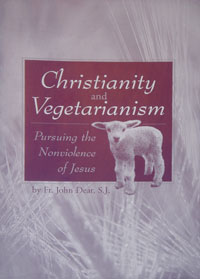Turkeys and Truth
 Most North Americans think of the (dead) stuffed turkey at the center of the Thanksgiving feast with feelings of belongingness, gratitude for abundance, and down-home comfort. Feelings about the living turkey, however, are quite a different matter, as anyone knows who has ever been called a "turkey," or nodded at the bumper sticker "It's hard to soar with the eagles when you work with a bunch of turkeys." It would be hard to find a person (or a movie) who appreciated the epithet.
Most North Americans think of the (dead) stuffed turkey at the center of the Thanksgiving feast with feelings of belongingness, gratitude for abundance, and down-home comfort. Feelings about the living turkey, however, are quite a different matter, as anyone knows who has ever been called a "turkey," or nodded at the bumper sticker "It's hard to soar with the eagles when you work with a bunch of turkeys." It would be hard to find a person (or a movie) who appreciated the epithet.
In the uncomfortable prophetic tradition of seeking for and speaking the truth about a taken-for-granted subject, let's look into this odd language pattern. What is so disagreeable about live turkeys?
For one thing, they aren't very pretty. Their heads are small in proportion to their bodies; their heads and necks have odd-looking warty pink skin on top, and droopy wattles underneath; their legs look too spindly to support their bodies. (In present-day genetically-engineered turkeys, their bodies are too heavy for their legs, resulting in bowlegs and painful joint disorders.) But do we despise other living beings--such as people--who don't look beautiful to us? Perhaps, but the best of us aren't proud of it. Perceived ugliness isn't enough to justify abuse.
It has also been said that they aren't very bright. There is a notion that turkeys are so stupid that they will drown if left outside in the rain, because they insist on tipping up their heads and opening their beaks. A traditional turkey farmer of our acquaintance, while not supporting the drowning-in-the-rain idea, said that yes, they were pretty dull. But then I remember thinking, in my childhood on the farm, that chickens were stupid because they flew in all directions when I tried to herd them. Quite possibly actions that are stupid from the viewpoint of the farmer's interests may make very good sense if the turkeys' interests are considered. And the present-day agribusiness method of chicken and turkey-raising, cramming them together into cages in reeking buildings, is not likely to reveal their mental potential.
In fact the only way to find out what turkeys are capable of is to treat them as friends; and then we find that, like dogs and cats (and pigs and sheep and cows), they can make loving companion animals. Erik Marcus, the youthful author of Vegan: The New Ethics of Eating tells of spending the summer afternoons of 1998 "hanging out" with the animals at a farm sanctuary in New York. The turkeys soon became his favorites. He found that they remembered his face, that each time he came they would sit closer, until a few would always come running up to be petted. They showed a certain individuality; the ones who chose Marcus as buddy weren't the same as those who favored his colleague.
Since there is so little foundation for the contempt heaped on living turkeys in our culture, it seems probable that we put them down chiefly because it makes us feel less uncomfortable about our (vicarious) violence toward them. That this same pattern of verbal and physical abuse is seen often in the oppression of (human) races, classes and ethnic groups should make us uneasy: are we showing the same sort of behavior we have despised in others?
It is time to put aside evasive language and "talk turkey" on the subject. If our dinner had a face, we should be able to face her or him ourselves, and admit that both our hearts and our minds have been closed. Let us open them to Divine love and truth, and learn to express a true thanksgiving.



 I grew up on a farm in Washington State in the 1940s and '50s, eating a
meat-and-potatoes dinner 365 days a year. I loved my cats and found baby
chicks and goslings and calves very appealing; the idea of animals being
killed for food made me uncomfortable occasionally, but since I didn't have to do it or
see it done, I tried, pretty successfully, not to think about it.
Vegetarianism would never have been an option in our family. I first heard
of it in grade school from a children's biography of Louisa May Alcott;
despite my kindly heart, it just seemed an oddity, though Louisa May seemed
to have a lot going for her in other respects.
I grew up on a farm in Washington State in the 1940s and '50s, eating a
meat-and-potatoes dinner 365 days a year. I loved my cats and found baby
chicks and goslings and calves very appealing; the idea of animals being
killed for food made me uncomfortable occasionally, but since I didn't have to do it or
see it done, I tried, pretty successfully, not to think about it.
Vegetarianism would never have been an option in our family. I first heard
of it in grade school from a children's biography of Louisa May Alcott;
despite my kindly heart, it just seemed an oddity, though Louisa May seemed
to have a lot going for her in other respects.
 I became a vegetarian more than fifty yeas ago when I saw a poor lobster
trying to get out of the boiling water. I never ate meat, fish or poultry
again. They told me that If I didn't eat meat I would die, but I said that
if the only way I could live was by killing, I didn't want to live anyway.
I'm now ninety-five years old. My husband I are the only vegetarians in our
family, but have no opposition from our family members.
I became a vegetarian more than fifty yeas ago when I saw a poor lobster
trying to get out of the boiling water. I never ate meat, fish or poultry
again. They told me that If I didn't eat meat I would die, but I said that
if the only way I could live was by killing, I didn't want to live anyway.
I'm now ninety-five years old. My husband I are the only vegetarians in our
family, but have no opposition from our family members.